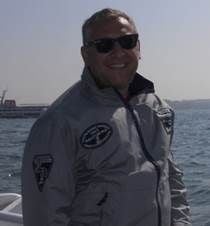Deep-Sea Ecosystem Management
A special issue of Journal of Marine Science and Engineering (ISSN 2077-1312). This special issue belongs to the section "Marine Biology".
Deadline for manuscript submissions: closed (10 September 2021) | Viewed by 7033
Special Issue Editor
Interests: ecological modeling; marine trophic webs; fishery stock assessment; marine mammal conservation; marine biodiversity; ecosystem services
Special Issues, Collections and Topics in MDPI journals
Special Issue Information
Dear Colleagues,
Despite deep-sea ecosystems sustaining important functions and services spanning from nutrient regeneration and carbon sequestration to biological and mineral resources, these environments remain among the least known on the planet. Consequently, the limited understanding of the composition, diversity and functioning of many deep-sea ecosystems restricts the effective possibility to develop robust ecosystem-based management, which is necessary to balance resource use and conservation. Climate regime shifts and increasing human pressures have already been documented as causes of major changes in these marine ecosystems at regional and global scales. Therefore, a set of effective management tools that can ensure these vulnerable ecosystems are healthy and resilient is urgently needed for these services to survive in the mid to long term.
This Special Issue aims to foster key advances in:
- Understanding the structure and functioning of deep-sea ecosystems;
- Assessing deep-sea ecosystem changes at different temporal and spatial scales;
- Exploring indicators and metrics informing about deep-sea ecosystem services for decision making, mitigation measures, and recommendations for management systems.
Dr. Roberto Carlucci
Guest Editor
Manuscript Submission Information
Manuscripts should be submitted online at www.mdpi.com by registering and logging in to this website. Once you are registered, click here to go to the submission form. Manuscripts can be submitted until the deadline. All submissions that pass pre-check are peer-reviewed. Accepted papers will be published continuously in the journal (as soon as accepted) and will be listed together on the special issue website. Research articles, review articles as well as short communications are invited. For planned papers, a title and short abstract (about 100 words) can be sent to the Editorial Office for announcement on this website.
Submitted manuscripts should not have been published previously, nor be under consideration for publication elsewhere (except conference proceedings papers). All manuscripts are thoroughly refereed through a single-blind peer-review process. A guide for authors and other relevant information for submission of manuscripts is available on the Instructions for Authors page. Journal of Marine Science and Engineering is an international peer-reviewed open access monthly journal published by MDPI.
Please visit the Instructions for Authors page before submitting a manuscript. The Article Processing Charge (APC) for publication in this open access journal is 2600 CHF (Swiss Francs). Submitted papers should be well formatted and use good English. Authors may use MDPI's English editing service prior to publication or during author revisions.
Keywords
- biodiversity
- ecosystem services
- assessment
- indicators
- conservation





